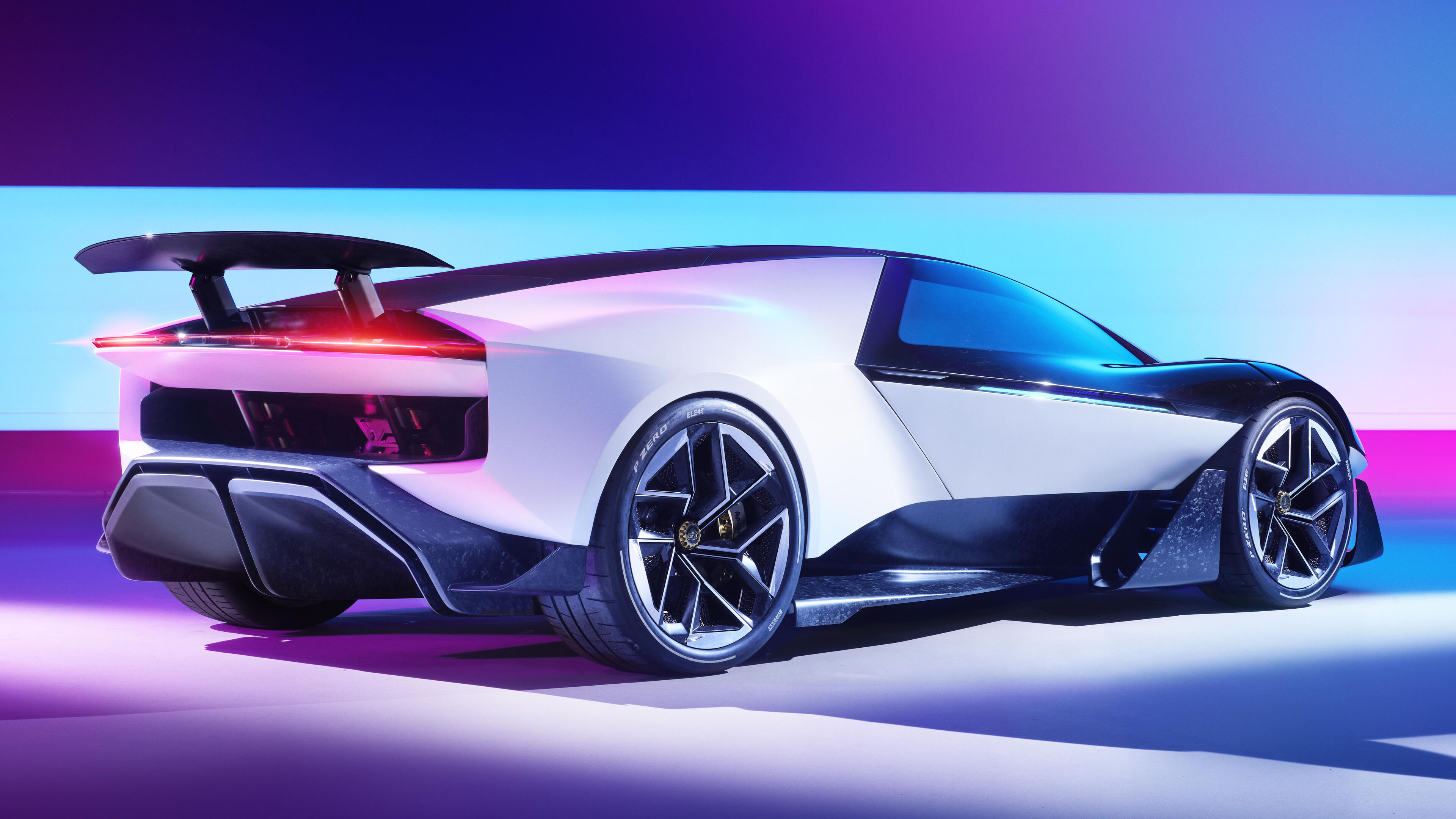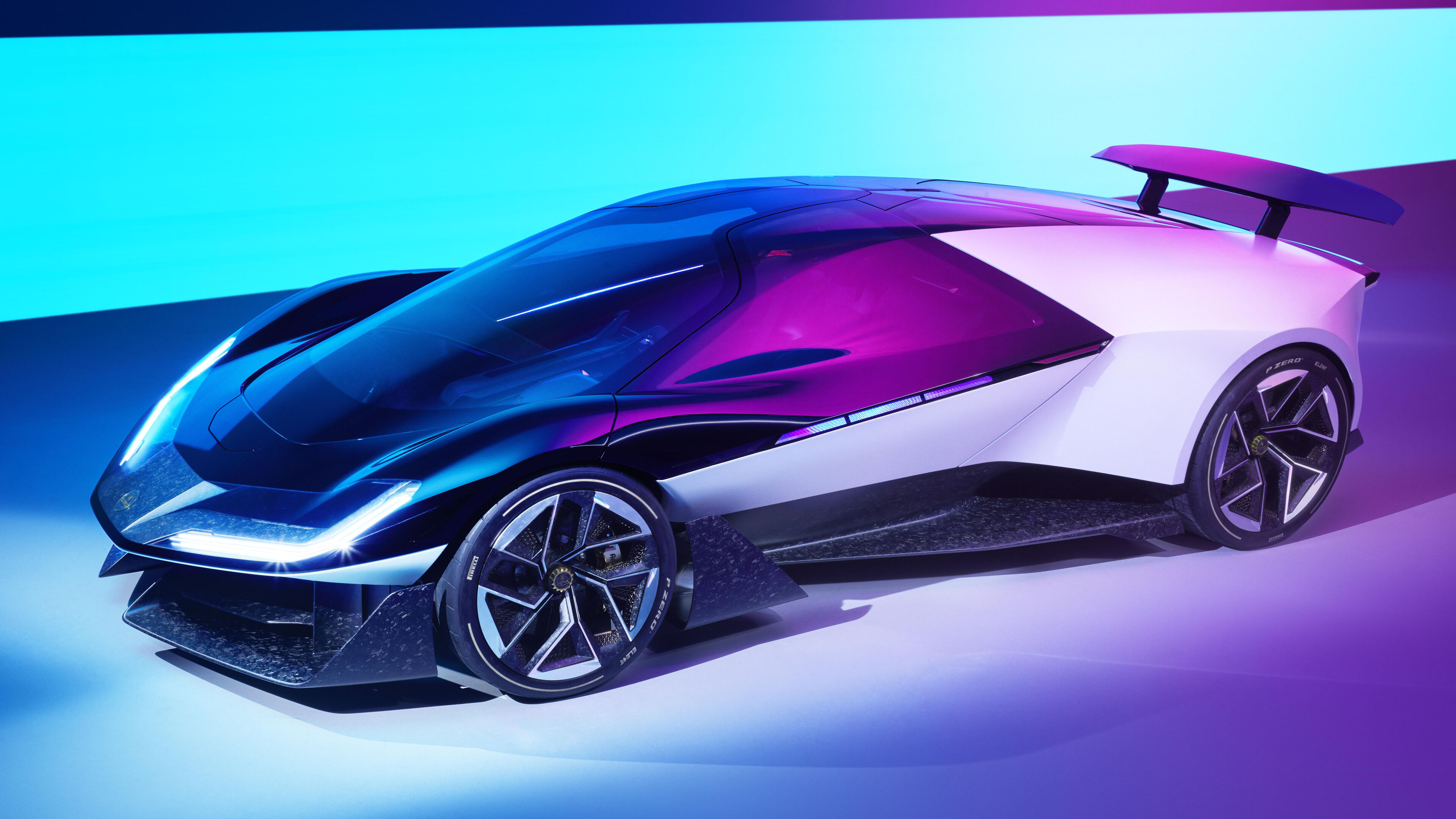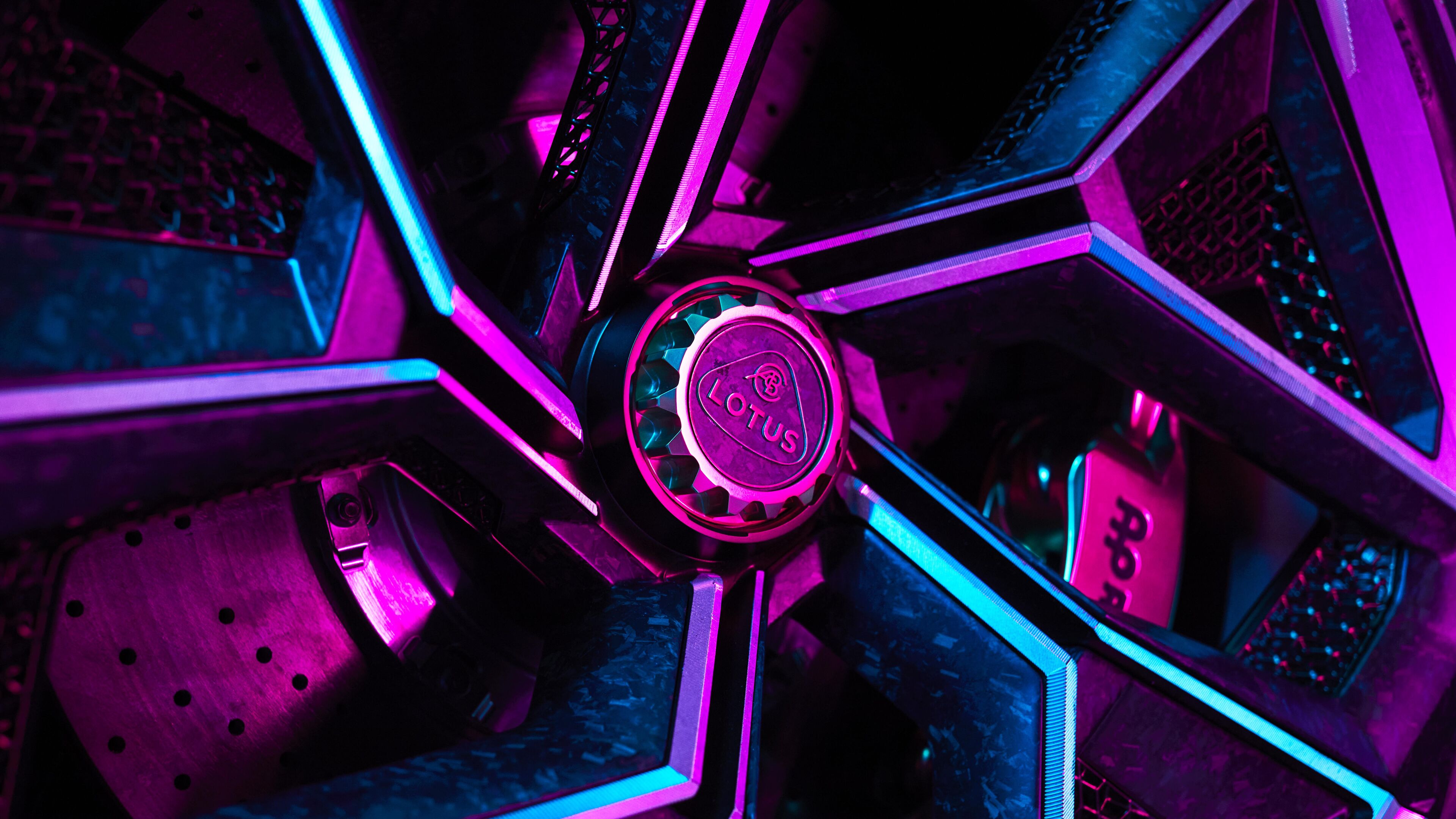
Does the Lotus Theory 1 showcase the future of the supercar?
Ridged bladder seats and an inflating steering wheel - has Lotus figured out the supercar's future... or gone mad?
What you’re looking at is definitively not a new Lotus road car. It’s a pure concept called the Theory 1, a car that seeks to distill traditional Lotus values into a vehicle that’s also woven marrow deep with technology, a bit of creative free space for designers to figure out what Lotus actually stands for.
A difficult question to answer when the technology is apparently sprinting in the opposite direction to what many would consider established Lotus values. Timely stuff, too, given that Lotus’ past two launches have consisted of two flavours of the same car in the Eletre large SUV and Emeya tall saloon, and good as they are, they’re big, heavy, tech-tilted luxury electric cars built in China, released in China before Europe and based on Chinese platforms. Precious little Lotusness to grab hold of.
But weirdly, quite a lot of people seem sanguine about the need for a car business to actually sell cars, and accepting of the fact that the UK and European market isn’t necessarily the biggest player in the game. But the next car from the company will be a smaller electric SUV – think Porsche Macan sized – so Lotus needs to reaffirm some core values before an entire generation thinks it only makes one thing.
Photography: Wilson Hennessy
Hence the Theory 1. A bit of a reminder that Lotus is still conscious. Although, when you read the press material on the car, you can’t help but feel that everything seems wound through with what can only be described as marketing overkill.
There’s the overarching Vision80 commitment from Lotus to transform itself into a “global performance technology brand”, which then devolves into the Theory 1 launching the “Lotus Theory” design manifesto for all forthcoming Lotus cars. In turn, that’s broken down into DNA or Digital, Natural, Analogue.
Digital, to represent “immersive and intuitive experience”, Natural for “emotional, human-centric design”, and Analogue, to stand for the company’s “continuous advancement of performance engineering”. At which point you start to overdose on buzzwords and develop the almost irresistible need to bang your head repeatedly on the nearest hard surface.
All of which falls away when you actually spend time with the car and its designers. Because, despite the overblown explanations, this is a car that revels in innovative simplicity. And that’s something that Lotus fans will recognise right off the bat.
First, there’s the way it looks. It’s not insane, looking like a well proportioned mid- engined supercar – the stout white rear clamshell giving Ford GT90 vibes, the bald silhouette with the sharp forward creases of the front spoiler looking a bit Lamborghini-ish. Complex, Evija-ish wheels over AP Racing calipers. There’s a clean, sharp nose, sidepods behind the front wheels, and a deep waisted side, all feeding a big, double hooped rear diffuser and active rear wing, itself sat over exposed rear suspension.
There’s loads of glass and clear polycarbonate, all leading your eye somewhere different, from the wingspan of the floating dash seen through the shin-height windscreen base, to the front of the car where you can see past the headlights into the front brake ducts. It’s a fun thing to pore over.
The headlights and DRLs are all laser based, super slim and lightweight, the DRLs particularly elegant, like little rods of lightning suspended on tiny pillars behind glass. The good bit? The lasers aren’t concept car fantasy, they’re real things produced by a Californian company called Kyocera SLD Laser, and the possibilities for weird and brilliant lighting design are endless.
There’s a pop-out lidar in the middle of the nose–keeping the lines clean until the tech needs deploying – another three deployable lidars, six high def cameras, a combination of long and short range millimetre radars, plus ultrasonics, all integrated into glassed in stakes in the doors and the black panel on the rear of the car. Apparently it is Level 4 autonomy capable, but without big pods on the roof and loads of sticky out sensors. It’s got the tech, but it’s hard to spot.
Top Gear
Newsletter
Thank you for subscribing to our newsletter. Look out for your regular round-up of news, reviews and offers in your inbox.
Get all the latest news, reviews and exclusives, direct to your inbox.
And that’s a theme with the Theory 1 that starts to make sense. The underfloor is contoured, incorporating NACA ducts for cooling, and to massage air through the car to the diffuser. The battery and motor assemblies are a single stressed member, removing the need for a rear subframe, and that wing attaches directly, so there are fewer squishy bits between it and real time effect.
And there are fewer actual elements. Where a normal car’s structure might include up to 100 different materials, the Theory 1 has 10. Easier to make, easier to recycle, less complex in general. So the tub is recycled, lightweight, chopped carbon fibre – the stuff that looks like a ragrolled paint effect. The body is made from cellulose based glass fibre – essentially made from weeds and again, light – the rubber is recycled, as is the aluminium, polycarbonate, polyester... even the glass is second life stuff.
And it’s light in context. For an electric car of this size and performance, a target weight of under 1,600kg isn’t bad at all. A production car couldn’t be this regimented in terms of materials true, but it positions Lotus as thinking about simplification. You might not get down to 10 materials overall, but it’s not impossible to shoot for, say, 80. And then work from there.
Of course, there’s a bit of theatre going on, because concept car. The doors are absolutely bonkers, reverse opening scissors that drag the front sidepods with them, a supporting spar rising up from the back of the roof like some sort of skeletal bird’s wing. They reveal a three-seat interior with a central seat and two saddlebagged passengers. Seats are fixed with tub secured pads for bottoms and backs, the driver presented with a yoke wheel and pedals that adjust to fit.
It’s surprisingly comfy, the wheel spearing towards you from a double winged dash, your body slung under a glasshouse that feels oversized and widescreen. The front of the car seems to stretch away into the distance – mainly because the base of the windscreen is somewhere past your shoes. And again, for all the talk of tech and complexity, it feels almost stark. But that doesn’t mean there isn’t tech in the periphery.
In the corners of the double sparred dash are the rearview cameras. There’s a small display screen between the handgrips of the yoke, a configurable headup display when needed for more info. Drive selector switches on the right of the wheel, configurable ones on the left, a set of small, tactile metal gearshift paddles behind each side. It’s small and simple, without the overwhelming complexity of a multiple big screen setup. More about choosing your hierarchy of information than presenting you with it all at once.
There are more RGB LED lights that use the reflections in the windscreen to produce red or green signals to indicate the need for braking or acceleration – kind of an inbuilt track trainer – and laser lights on the dashboard wings that can work with the nav to indicate turns. And all of this uses a system called Lotuswear delivered by a company called Motorskins. Which all reads very oddly, until you realise that it’s basically robot fabric built into the seat and wheelgrips.
Sounds very sci-fi, but Lotuswear is essentially just another way of communicating information via personalised haptic feedback. Basically, it’s a series of ridged bladders that form textures within the seat and wheelgrips so you can firm up and tighten the seat, or increase the grip width. If the navigation needs you to turn, the seat can ‘nudge’ you on that side, or deliver different bits of info depending on which drive mode you happen to be in. So Range, Tour, Sport and Individual would all do different things. And yes, it does basically work – although the sensation of direction information via bum cheek or sweep to the kidneys takes a little getting used to.
There’s also a cool KEF sound system built into the 3D printed headrests. A system that can produce noise cancelling frequencies, or proper beats, supplemented by a subwoofer mounted behind that centrally positioned driver’s seat. But again, it feels pared back, clean and unfussy. For a lot of people, that’s what Lotus is all about.
Of course, none of these things feels groundbreaking in isolation. Simplicity, recyclability, integrated technology – we’ve seen it all before in one format or another. The proportions don’t break any particular boundaries, it’s not a shocking car, and it is not, at the end of the day, real.
But what the Theory 1 does is bring those elements together under a Lotus philosophy that really does make sense for this brand, a car of subtle detail. With quite a few of the ideas translatable to real applications. The explanations might be a little bit pretentious, but the execution is strong. The only problem here is that we’ve heard Lotus talk the talk before... now we need the company to push through the initial business side of electric SUVs and start to implement these ideas on a next gen sports car.
Something that might not make a whole heap of money, but reminds the next generation why Lotus has been held so dear for so long. To make a Lotus for the future, while remaining respectful of a glorious past.
Trending this week
- Car Review
BMW 1 Series











